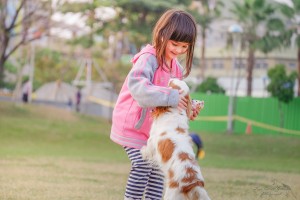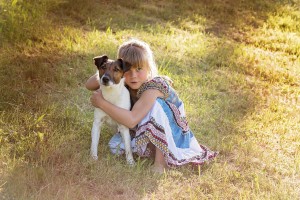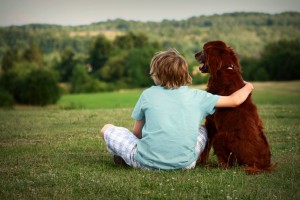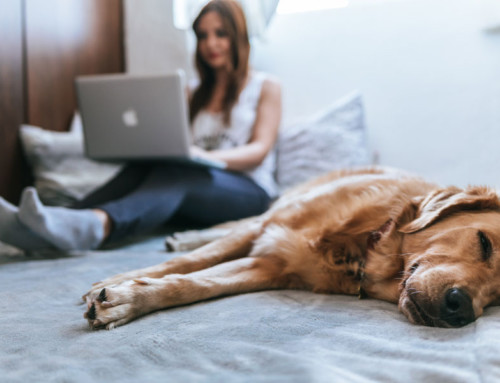Growing up with a constant company of a loving pet has plenty of mental and physical benefits. What’s more, one of the best ways to teach your child responsibility is to have them take care of the family dog. Obviously, getting a dog is a great change, especially for the household that didn’t have any pets before. Therefore, it’s essential that you look into all the obligations that come with owning a pet as well as do your research on different breeds and their needs. Don’t get a dog if you’re going to treat it like your child’s new toy. A pet is also a member of your household that will just happen to have an amazing positive influence on your kid(s).
It’s paramount that you talk to your child about getting a dog. If you hope they’ll learn how to be more responsible and considerate you have to explain to them what’s expected of them. Talk to the kids in a fun and warm way so that they’re actually happy about their new pup duties. Don’t just scare them away by stating all the chores they’ll be in charge of in a strict and reprimanding manner. Make them look forward to the change of pace at home.
Boosting the child’s observational skills
Obviously, you want to make sure that your family dog and child get along well. However, dogs tend to show extreme fondness towards children just like children do towards dogs and other animals. In that respect, it would do your kids a lot more good to learn about boundaries on their own. Kids are generally hyper and they may irritate the dog on occasion in an attempt to show their love or make it play with them. A sudden pull on the tail or a painful hug may cause the dog to show its discontent with a bark or growl. Of course, you want to make sure that your child is safe but this type of behaviour is nothing to be afraid of, especially if it only happens when the child is too rough with the dog. The dog is simply warning the child, which allows the kid to actually learn the boundaries and what it means to respect them. In time, this will also boost the child’s observational skills, since they’ll be able to notice when the dog is tired, what it wants, what makes it happy and what bothers it, etc. Adopting that kind of knowledge in their childhood will allow the kids to apply it in social situations as well, when interacting with other kids.
Staying aware of the consequences
One of the major benefits of owning a family dog when teaching children responsibility is the kids’ ability to notice and recognize the consequences of their actions. Aside from the above-mentioned setting of boundaries, children will also get to understand in time that what they leave on the floor, be it their food, a piece of clothing, or a toy, has every chance of getting chewed up by the dog. As they realize that floor is the dog’s territory and playground, you’ll get to witness your child growing to be more self-aware and tidier, as they start picking up things and organizing their stuff so that the dog can’t get to them. Of course, don’t miss the opportunity to do your bit and explain to your kid how leaving their things somewhere the dog can reach and chew on them can be very dangerous for the pet.
Adopting healthy habits and routines
When on “dog duty”, children are bound to adopt some healthy habits and learn more about what’s good for their pet as well. For starters, they’ll have to take their dog for a walk and feed them. This will also help the kids get familiar with the notion of routine, which is essential for proper development of the sense of responsibility. For example, once I explained to my son that our dog Joey shouldn’t eat all kinds of foods that we eat because this can make the dogs sick, he made sure to give Joey his share of healthy Black Hawk dog food exactly on time every day. He’s also invested in training Joey to stop asking for food when we eat our meals, and the progress is very noticeable.
Using age-appropriate tasks to develop responsibility
Your child should be aware that they have the ownership of the dog even though they may be too young to completely take care of it. This is where age-appropriate task assignment can be essential for proper responsibility development. If your child is too young to walk the dog by themselves or if they’re not big enough to groom the dog on their own, don’t expect them to do this. Give them smaller tasks such as feeding the pet, making sure he has clean water at all times, and playing with it as well. However, make sure that they’re part of other chores. When you take the dog for a walk, have your kid come with you. When you’re grooming the dog, let your child do the brushing. That way young children won’t get scared of tasks they can’t complete, which can seriously affect their confidence and make them give up easily. You want the opposite, and gradual introduction to full dog responsibility with age-appropriate tasks is your way to build both confidence and responsibility in your kids.
Thanks to the family dog, you won’t only get to raise a responsible kid with more ease, but your child will also grow up together with a loyal and loving friend. This means that your child will never have to feel lonely. They’ll always have someone that accepts them, no matter what. A personal environment like that will also boost your child’s confidence and self-esteem, and help them overcome shyness effectively.
This post has kindly been provided by Zara Lewis, a regular contributor at TheWellnessInsider.sg Zara is a proud Mum of two + 1 foster dog! Zara is personally very interested in lifestyle and pet topics.









Leave A Comment